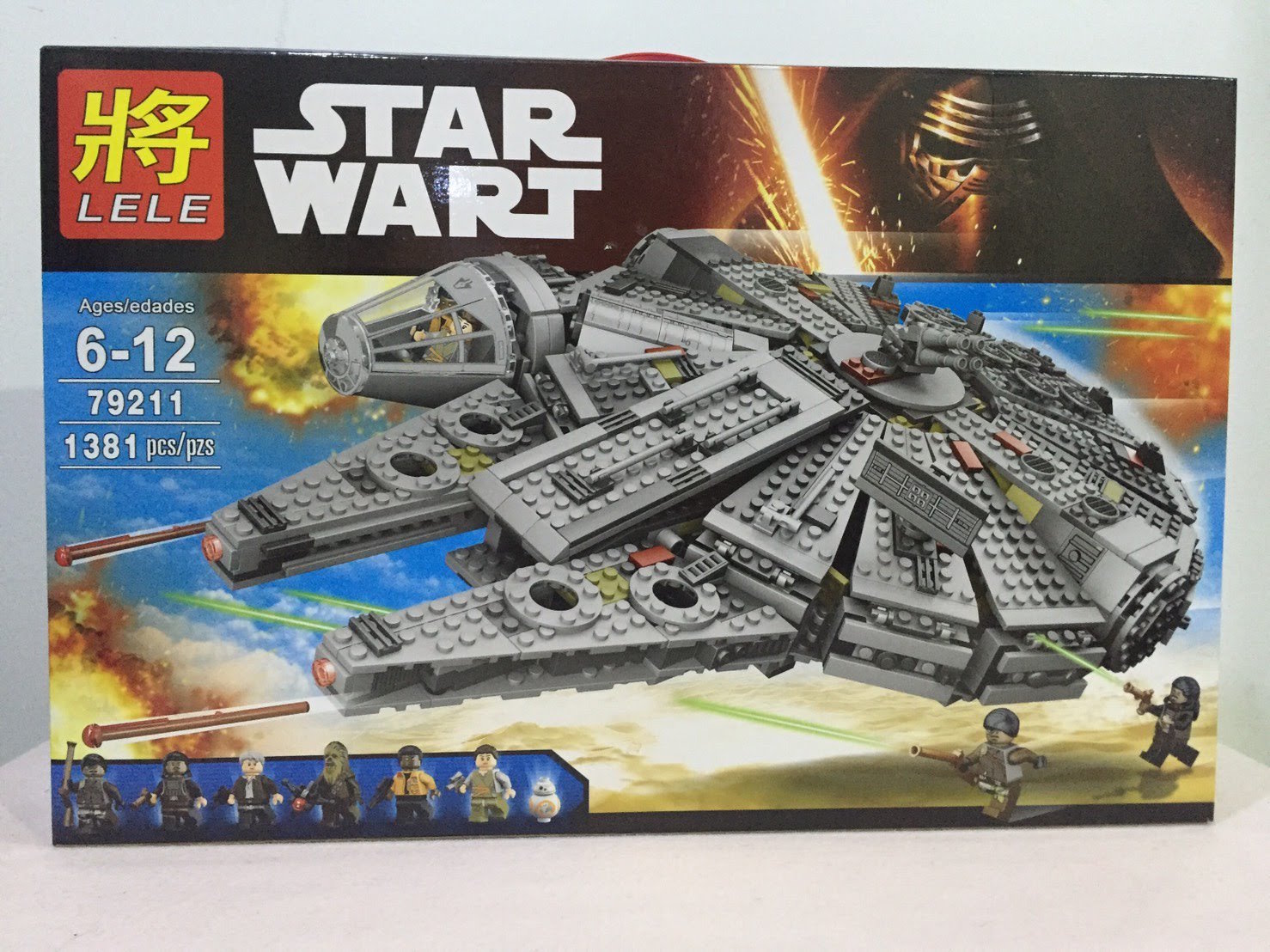You’re sifting through the aisles of your local dollar store, and your eyes light upon a LEGO Millennium Falcon—and at a price so low that all Star Wars toy aficionados can afford it, no matter their financial situation. But when you look closely, you notice something is a little… off.
Instead of the familiar Star Wars logo, instead it reads… Star Wart.
Welcome to the world of counterfeit merchandise. It’s an illegal—and extremely profitable—world. But first, a few definitions:
Counterfeits are merchandise with the same name as the original product, but made by an unlicensed manufacturer. “Counterfeit” is also an umbrella term for all of these less-than-legal goods.
Knock-offs are merchandise that clearly lift from the original product, but are made under a different brand name.
Pirated goods are reproductions of original merchandise.
If prostitution is the world’s oldest profession, counterfeiting must be the second oldest. That’s because it’s more lucrative than prostitution, more lucrative than drugs. In a recent TED talk, counterfeit investigator Alastair Gray claimed that while drug dealers earn 100 to 200 percent profit on their merchandise, counterfeiters earn a 2,000 percent profit.
In 2016, The Organisation for Economic Co-operation and Development reported that counterfeit imported goods are worth half a trillion dollars. By 2022, this shadow industry will be worth $2.3 trillion.
Geek culture represents a chunk of that very large stack of change. As Rob Holmes, a private investigator and CEO of IP Cybercrime who has spent his career sniffing out counterfeit goods, tells SYFY WIRE, “geek culture has been under attack by counterfeiters for decades.”
Specifically, “products with rabid fan bases are counterfeited the most,” says Holmes. It’s as if we geeks have targets painted on our Batman-themed wallets.
Holmes says that Star Wars and other geeky properties have a surfeit of counterfeits in three categories: clothing, toys, and DVDs. (Game of Thrones box sets are currently a hot item.) “Sometimes,” he says, “the counterfeit toys and apparel beat the genuine goods to market.”
Holmes also explains why money isn’t the only reason dealing in counterfeit goods is so appealing to criminals: “You can go to jail just for possessing drugs,” he says. “With counterfeiting, you can be busted with a tractor-trailer full of Star Wars t-shirts and given a slap on the wrist.”
Counterfeiters feed the need for inexpensive merchandise from our favorite properties, like Star Wars, Marvel, DC Comics, and Game of Thrones, to name a few. Manufacturers in China and in South America create toys, clothing, and figurines, without paying a licensing fee to the registered trademark holders.
Some of these ersatz goods are authentic-looking products or near simulations. But there’s more to counterfeits than meets the eye.
Kevin Thompson, an attorney with Ladas & Parry LLP who has worked with major entertainment companies, remembers a difficult time with an old client. “People were making plush toys that were infringements of their character,” he recalls. “[The company] had no control of what these plush toys were stuffed with, filling them up with who knows what.”
These goods are not only unlicensed, but also unregulated. While the U.S. government regulates plush toys under the Flammable Fabrics Act, businesses that create fake toys ignore restrictions in favor of less expensive, and potentially dangerous, materials. Also, keep in mind the buttons that enhance your plush Thor may have been sewn without reinforcements; your toy’s unsecured hardware may pose a choking hazard.
As Thompson reminds, trademark law exists “at its roots” to protect property: “The purpose of trademark law is ultimately for consumer protection.”
In order to protect their property and themselves from unwarranted lawsuits, intellectual property holders should put boots on the ground in the countries where the copyright infringement takes place. “Some of the law firms we work with have investigators, so we figured out where these goods were coming from,” Thompson says. After bringing in local law enforcement, “we worked with local people to get these goods off the markets. We got a lot of the goods seized and destroyed.”
But Brandon J. Huffman, attorney and founder of Odin Law and Media, says it’s not that simple to solve the problem of counterfeiting, particularly with a company as large as Star Wars‘ parent company, Disney.
“True counterfeit merchandise is almost certainly actionable. That said, with a company the size of Disney, with properties as numerous and popular as Disney’s, it’s probably impractical to police literally every infringement,” Huffman explains.
“Disney can, and likely does, take steps to enforce its rights through U.S. customs enforcement as well as cease and desists and other actions,” Huffman adds. But “at some point the economics has to come in, where you have to decide… which is more expensive? The harm that it’s doing to the brand or the cost of stopping it?”
Holmes says intellectual property holders take action against counterfeiters in one of two ways: civil or criminal court. In criminal court, “it’s cheaper for [the intellectual property holder] because they don’t have to pay the attorneys, and it’s a lot less effort on their end. The downside is there isn’t going to be any recovery money.”
While taking an offender to civil court is a likely victory on the part of the intellectual property holder, it’s difficult to collect the money owed. “How are you going to collect $10 million from some scumbag downtown when all he does is sell product and hide his money from the IRS?” said Holmes.
Because of this, Holmes said, “a lot of brands opt for the law enforcement option.” However, LEGO recently won a competition case against a copycat plastic brick producer, Bela, which gives intellectual property holders even more ammunition against counterfeiters in civil suits.
With high profit margins and minimal chances of jail time, it’s no wonder counterfeit merchandise is big business. With the rise of quality 3D printers, it’s only poised to grow here in America, especially since goods no longer have to pass through the wary eye of U.S. Customs and Border Protection. Even though counterfeit goods manage to insinuate themselves into the U.S., U.S.C.B.P. seized $1.36 billion worth of merchandise in 2016.
The burden is on us, fellow geeks, to put a stop to counterfeit merchandise. After all, if there were no demand, there would be no market.
If it helps, try not to think about knock-off Star Wars toys as a cheap way to get our Luke Skywalker fix. Think of them as damaging to our entire society. And not just because counterfeit goods have been linked to funding terrorism. With tax generated from official sales, you’re helping us pay for our Medicare, Social Security, and defense.
Holmes said, “[Counterfeit goods are] tearing into our economy. It’s a trillion-dollar industry and not a single one of these people is paying taxes… I think it’s a bigger impact on our economy than the [most recent] tax bill.”
I personally dislike the idea of telling people to spend money, to consume, a la They Live. But if you are spending money on geeky merchandise, take a hint from Joseph of Arimathea in Indiana Jones and the Temple of Doom on the subject of the genuine versus the fake… and choose wisely.

